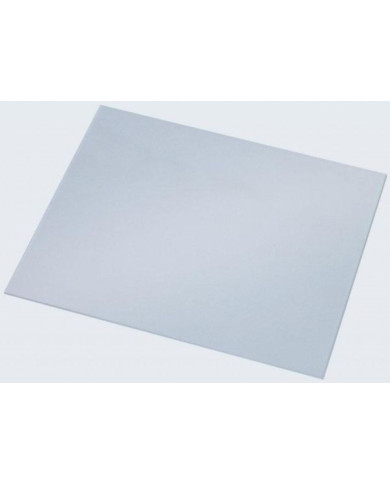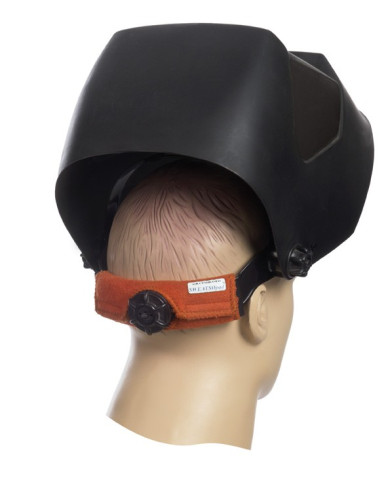Why and When to Change the Consumables of Your Welding Helmet?
- Nada Iddouch
- Home
- 0 Comments

The Importance of Personal Protective Equipment (PPE)
One of the essential elements of effective protection is wearing a welding helmet. It protects both the face and neck from scratches, cuts, and burns caused by sparks, as well as the eyes from the radiation emitted by the welding process. Indeed, a welding arc emits radiation covering a wide range of wavelengths, from 200 to 1,400 nanometers (nm) (or 0.2 to 1.4 micrometers (µm)). This spectrum includes the ultraviolet (UV) range (200 to 400 nm), visible light (400 to 700 nm), and infrared (700 to 1,400 nm). UV rays are divided into three subcategories: UV-A (315 to 400 nm), UV-B (280 to 315 nm), and UV-C (100 to 280 nm). The cornea of the eye absorbs all UV-C rays and the majority of UV-B rays. UV-A rays pass through the cornea and are absorbed by the lens. The retina can receive some ultraviolet rays, visible light, and infrared rays.
The Dangers of Radiation and Safety Standards.
Three types of radiation are encountered in welding: ultraviolet, visible, and infrared. Some UV rays can cause damage to the surface and the mucous membrane (conjunctiva) of the eye, which is called "arc eye." These are the symptoms of conjunctivitis, or inflammation of the mucous membrane covering the front of the eye.
The pain can range from a slight pressure in the eye to intense pain, along with tearing and redness of the eye and surrounding membranes (bloodshot eye). The eyes may feel gritty, experience abnormal sensitivity to light, and intense radiation, the distance between the electric arc and the eye, the angle of incidence of the rays on the eye, and the type of eye protection worn by the welder and nearby workers determine the duration of exposure likely to produce these effects. However, a few seconds of intense UV radiation exposure is enough to cause this issue. Symptoms may not appear until a few hours after exposure. Long-term exposure to UV radiation can cause cataracts in some individuals.
To counter these harmful health risks, a welding helmet is therefore essential. This PPE must comply with current standards. Safety must be the top priority when selecting equipment. It is necessary to ensure that a welding helmet has been tested and validated by the National Standards Institute (ANSI). ANSI Z87.1 – 2003 is the latest safety standard for a welding helmet. The helmet must be labeled with ANSI Z87.1 – 2003 or Z87+. This confirms the helmet's approval by the American National Standards Institute and the Society of Safety Engineers.
When to Replace the Consumables of Your Welding Helmet?
10/10 ChatGPT The welding helmet consists of different parts. The basic helmet includes a non-flammable face shield that is placed on the welder's head and secured with an adjustable strap. The helmet features a rectangular visor covered with a protective screen. The visor is specially coated and darkened to protect the welder's eyes from the harmful light of a welding arc. The higher the level of darkening, the darker the glass, as it filters more light. It is equipped with a liftable visor and a tinted or photosensitive glass screen. Three parameters are adjustable:
- The shade (filter) of the protective screen.
- The reactivity of the photosensitive cell, which will tint the filter upon detecting intense light.
Unlike helmets, which can be raised, masks are not attached to a headband. Therefore, the welder holds them by hand using an integrated handle.
Depending on the needs and the applied processes, the optical class (protection index) of the glass varies. Indeed, the chosen optical glass must be suitable. The welder should also remember to protect their hands and body with the appropriate PPE (gloves, apron, safety shoes, etc.).
The helmet is worn by a professional welder throughout the day during the welding process. Neck pain can be caused by wearing a heavy welding helmet. Lightweight helmets weighing around 566 grams help avoid fatigue after wearing the helmet for a long period. More affordable helmets are heavier and are suitable for small projects or amateur welding.
Furthermore, for maximum protection, as previously mentioned, the welding helmet must be maintained. This naturally involves regularly replacing its consumables. By doing so, you extend the lifespan of your equipment.
Firstly, when the mask is secured on the head using a headband, it must be checked before each use. Indeed, it is crucial to avoid the risk of the mask falling off and exposing the welder to welding radiation and sparks. Each welder has their own preference regarding the material of this headband, which is typically made of leather, sponge, or cotton. Additionally, the facial seals of the mask ensure both a proper fit and adequate sealing.
Next, the inner and outer screens of the mask undergo wear and tear over time with each welding operation. It is essential to monitor their condition and replace them as needed.
Additional external protections, such as tinted or transparent protective visors, should also undergo frequent inspection. In case of any defect, and to maintain optimal safety, their replacement is necessary.
If the mask is equipped with ventilation, in addition to maintaining the system itself, it is also important to ensure the protection of the respiratory hose.
In stock
In stock
In stock
In stock
Last items in stock
In stock
In stock

























0 Comments